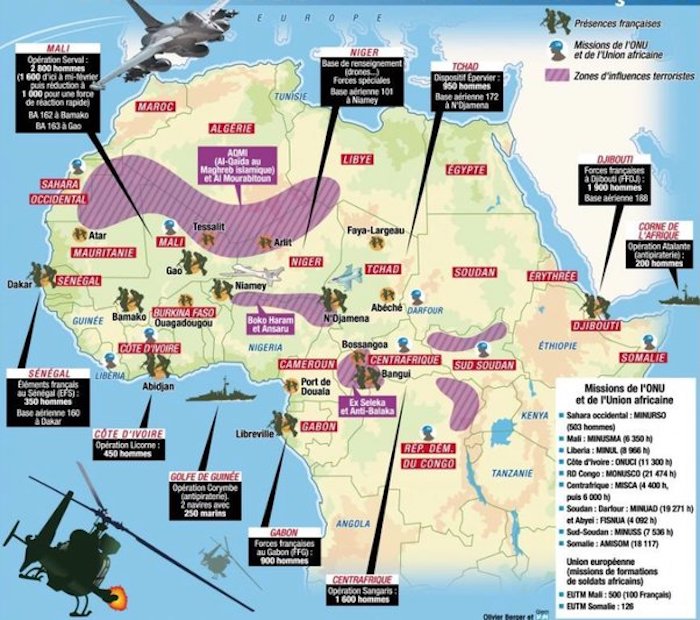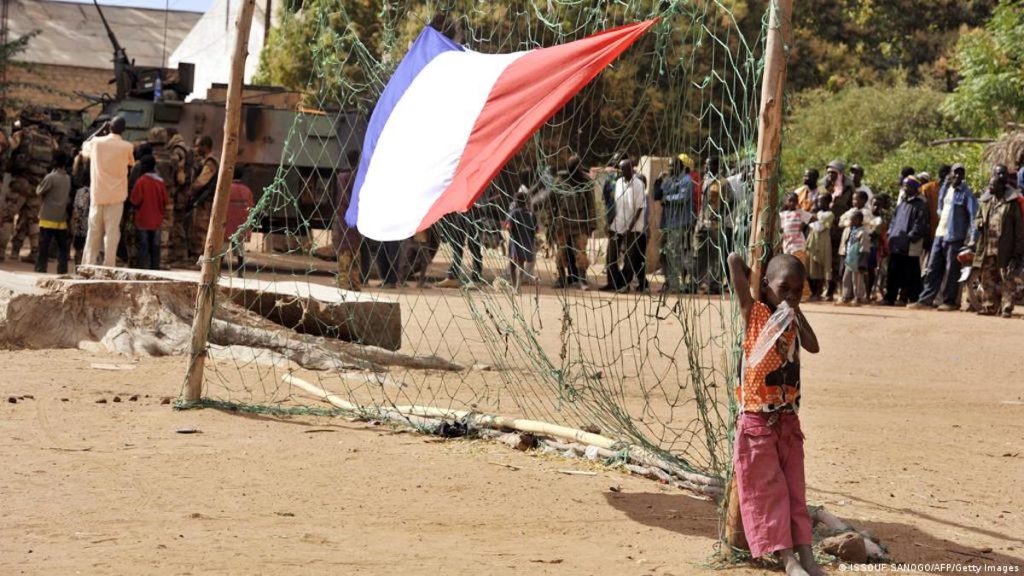The French Empire was one of the most powerful in human history. At its height, it controlled almost ten per cent of the world’s land area. The country was a dominant global power from Southeast Asia to West Africa.
And that was particularly true in Africa. France oversaw territory spanning 17 modern-day nations, from Morocco to the Congo. Under the banner of a “civilising mission,” France managed brutal occupations that engorged the empire’s wealth. It left a terrible legacy for ordinary Africans – marked by slavery, extraction, and murder. And today, France’s empire in Africa is STILL around – in a streamlined, more profitable, and even more exploitative form.

In the aftermath of the Second World War, a wave of decolonial movements swept across Africa and Asia. And the French – humiliated by their defeat and occupation at the hands of the Nazis – were eager to maintain their empire. So they responded to Algeria, Indochina, and Madagascar revolts with brutal reprisals. Keeping foreign holdings became increasingly difficult. By 1960, France was forced to grant independence to almost all its colonies. But something fundamental happened in Africa. The leadership of France decided to keep their empire in Western and Central Africa intact in everything but name.
The plan was simple. When an African country gained independence, it was made to sign a so-called “cooperation agreement” with France, outlining the nature of their relations moving forward. In exchange for French foreign aid, African countries were required to give France rights over natural resources, allow France to maintain troops in their territory indefinitely, and – most importantly – keep these countries’ currencies linked to France’s currency, the franc.
Instead of having their currencies, they were to use the “Franc of the FinancialCommunity of Africa” – what is now called the “CFA franc.” The French framed these “cooperation agreements” as a choice, but they were also clear about the consequences of defiance. When the leader of Guinea, a socialist named Sékou Touré, rejected the cooperation agreement with France – and declared that he preferred to be “poor in freedom than rich in slavery.”– the French government decided to make an example of him. They cut all foreign aid to Guinea and did everything they could to destabilise the government. They launched a secret campaign to print fake Guinean banknotes and flood the country with them. The French said these countries existed within the so-called “French Community.”
But the policy would come to be known more widely as “Françafrique.” It was about having the former colonies in a maximally advantageous position for French interests. Many of the first generations of postcolonial leaders in former French colonies had essentially been installed by the French. Jacques Foccart, a French diplomat, oversaw French relations with Africa for almost thirty years and built many client relationships with African leaders, using corruption and covert operations to make them loyal subordinates. Since 1960, France has invaded Africa more than fifty times.

Gabon is critical to France because it has a massive supply of oil and an even bigger supply of uranium. Among the African colonies, Gabon was historically one of the very closest to France. In 1967, Omar Bongo became Gabon’s president, soon turning the country into a one-party dictatorship. And Bongo was intimate with France. So, under Bongo, France and Gabon enjoyed a relationship that benefited both sets of elites. The French state-owned oil company Elf pumped Gabon’s oil, and its uranium went into France’s nuclear weapons arsenal. In return, France subsidised Gabon’s budget, especially the parts that flowed into Omar Bongo’s and his family’s pockets. At one point, Bongo was worth over one hundred and thirty million dollars. Gabon, meanwhile, remained poor and underdeveloped. Under Bongo, it had one of the highest infant mortality rates in the world.
Other countries, like the Central African Republic, are today some of the poorest in the world – partly due to the legacies of French-backed dictators like Jean-Bédel Bokassa. But there’s another aspect of French influence that’s even more important. Probably the most central part is the CFA franc – the last colonial currency still widely used. In practice, the countries that use the CFA franc have virtually no monetary sovereignty: the value of their money is linked to the Euro.
The poorest countries in the world have a currency controlled by the wealthiest countries. And so, the imperatives of European countries – fiscal discipline and fighting inflation– end up shaping the very different world of Western and Central Africa. That leads to an overly friendly approach to credit, something that’s necessary for our current system for an economy to grow. It means that any appreciation in the Euro makes exports from these countries less price-competitive. So look at what happened in Senegal. The CFA franc’s value increased when the Euro appreciated against the dollar from 2000 to 2009. But this made local Senegalese rice more expensive than imported rice from Thailand.

So these African countries are not under-developed: they are overexploited. France almost totally relies on its influence in Africa for its economic power. In the words of Italy’s foreign minister, “If France didn’t have its African colonies, because that’s what they should be called, it would be the fifteenth largest world economy. Instead, it’s among the first, precisely because of what it is doing in Africa.”

